About the author: Lina Younes has been working for EPA since 2002 and chairs EPA’s Multilingual Communications Task Force. Prior to joining EPA, she was the Washington bureau chief for two Puerto Rican newspapers and she has worked for several government agencies.
Lea la versión en español a continuación de esta entrada en inglés.
Some links exit EPA or have Spanish content. 
As the school year comes to an end, many parents are in the predicament of finding activities to keep the kids entertained during the summer months. As a parent of a six year old, I want to find educational activities for her to do while I’m at work and on weekends.
Personally, I think this season is a golden opportunity to get the children interested in science AND, above all, in protecting the environment. The best part is that you can make it fun without letting them know that you are “teaching” them something. When talking about the environment any location can be your classroom—be it indoors or outdoors.
For example, while planting vegetables for the summer, you can teach the children about greenscaping. Playing outside or going to the beach are opportunities to talk to kids about protecting themselves from the sun’s powerful rays. And if there are any creepy crawlers in the home you want to get rid of now, visit an interactive Website in English and Spanish, Help! It’s a roach!
For parents of young children, I highly recommend some of EPA’s materials, in English and Spanish on the Planet Protectors Club. These are a series of workbooks and educational materials for young children designed in conjunction with teachers that basically focus on the three R’s reduce, reuse, and recycling of waste management.
Our Office of Solid Waste has other materials geared for middle school and high school students which have many applications.
Furthermore, two new publications, Working Together for a Healthy Environment and Teach English, Teach About the Environment help multilingual individuals and community groups learn more about recycling. Plus, there are numerous community service projects that enable students to apply the lessons learned in the classroom to real-life experiences.
OK. I’m getting off subject now. Let me go back to young children.
I must confess that as the mother of a six year old (and of three college students) I have also become aware of how much children learn from our example and daily comings and goings. Recycling has become second nature to them and I was very impressed by the little one reminding me not to get out of the house without sun block! Glad to know that I must be doing something right.
Que el mundo entero sea su salón de clase
Sobre la autor: Lina M. F. Younes ha trabajado en la EPA desde el 2002 y está a cargo del Grupo de Trabajo sobre Comunicaciones Multilingües. Como periodista, dirigió la oficina en Washington de dos periódicos puertorriqueños y ha laborado en varias agencias gubernamentales.
Mientras se avecina el fin del año escolar, muchos padres están en el proceso de encontrar actividades para mantener a sus niños ocupados durante los meses de verano. Como madre de una niña de seis años, quiero encontrar actividades educativas para que ella se entretenga mientras estoy trabajando y durante los fines de semana.
Personalmente creo que esta época realmente se presta como una gran oportunidad para interesar a los niños en las ciencias y especialmente en la protección ambiental. Lo mejor de todo es encontrar algo divertido sin que ellos se den cuenta de que se le está “enseñando algo”. Cuando se habla del medio ambiente, cualquier lugar puede ser un aula escolar-sea en entornos interiores como exteriores. Por ejemplo, mientras esté sembrando legumbres y flores para el verano, puede enseñar a los niños sobre la jardinería ecológica. Mientras está afuera o en la playa también puede aprovechar para hablar a los hijos de cómo protegerse de los poderosos rayos solares. Y si ve algunos insectos indeseables invadiendo su hogar y quiere enseñar a los hijos sobre cómo eliminarlos, visite el sitio interactivo en inglés y español, ¡Socorro, una cucaracha!
A los padres de niños pequeños, le recomiendo alguno de los materiales educativos de EPA en ingles y español del Club de Protectores del Planeta. Son una serie de folletos y materiales educativos para niños diseñados en conjunto con maestros y se centran básicamente en las tres R’s de la gestión de desperdicios-el reducir, reutilizar y reciclar.
Nuestra Oficina de Residuos Sólidos tiene otros materiales para estudiantes de intermedia y de escuela superior. Además hay dos nuevas publicaciones, Trabajando juntos por un ambiente saludable y Aprenda inglés, aprenda sobre el medio ambiente que ayudará a individuos y comunidades multilingües a aprender más sobre reciclaje. Además hay numerosos proyectos de servicio comunitario que ayudan a los estudiantes aplicar las lecciones aprendidas en el salón de clase a experiencias de la vida real.
Bueno, estoy divagando. Regresemos a los niños.
Debo confesar que como madre de una niña de seis años (y otras tres universitarias) he cobrado consciencia sobre el hecho de que nuestros hijos aprenden mucho de nuestro ejemplo y acciones cotidianas. El reciclaje ya es un buen hábito que han internalizado y me impresiona el hecho de que mi pequeña es la que me recuerda antes de salir de la casa que tenemos que usar la crema de protección solar! Después de todo parece que estoy haciendo algo correctamente.
 Each week we write about the science behind environmental protection. Previous Science Wednesdays.
Each week we write about the science behind environmental protection. Previous Science Wednesdays.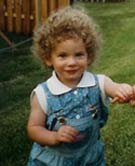 In 1987, I was fortunate for two reasons – I received a promotion to manage a group of scientists who evaluated occupational and residential exposure to pesticides, and I became a father for the first time. Watching my young daughter crawl around on the grass and picking up a small pebble to explore with her mouth made me wonder about possible exposure of young children to pesticides used on lawns – at the same time, I realized that our group of scientists had very little data to answer the question. Thus, I began on a 20-year journey to promote research related to better understanding children’s environmental exposure.
In 1987, I was fortunate for two reasons – I received a promotion to manage a group of scientists who evaluated occupational and residential exposure to pesticides, and I became a father for the first time. Watching my young daughter crawl around on the grass and picking up a small pebble to explore with her mouth made me wonder about possible exposure of young children to pesticides used on lawns – at the same time, I realized that our group of scientists had very little data to answer the question. Thus, I began on a 20-year journey to promote research related to better understanding children’s environmental exposure.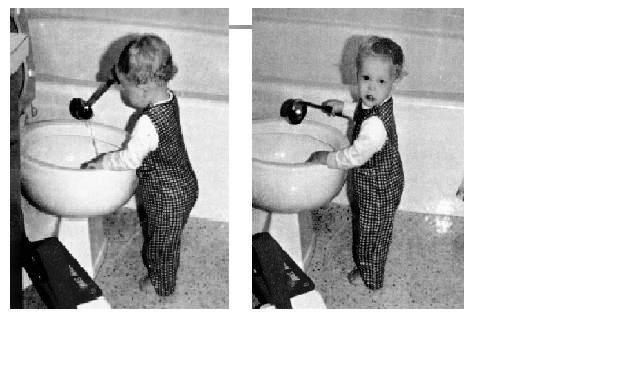 Take some time and watch a toddler very carefully and you will begin to understand just how unique children’s behaviors can be compared to adults – here is a great example:
Take some time and watch a toddler very carefully and you will begin to understand just how unique children’s behaviors can be compared to adults – here is a great example:
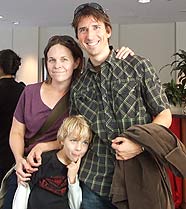 As we neared the start time, we were anxious to see who’d burst through the Koshland doors proclaiming “We’re here for the Hunt!” From 11 until about 4:30 a diverse set of teams arrived, all ready to run around the neighborhood, looking for science clues: Teams of friends, teams of big sister/mentors, teams of college students on a homework mission, mom-headed teams, dad-headed teams, mom-and-dad-headed teams, abuela y padres headed teams.
As we neared the start time, we were anxious to see who’d burst through the Koshland doors proclaiming “We’re here for the Hunt!” From 11 until about 4:30 a diverse set of teams arrived, all ready to run around the neighborhood, looking for science clues: Teams of friends, teams of big sister/mentors, teams of college students on a homework mission, mom-headed teams, dad-headed teams, mom-and-dad-headed teams, abuela y padres headed teams.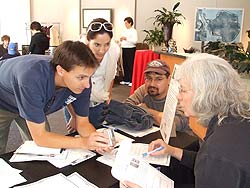 Once their time cards were stamped, they were off! Dashing about DC’s Penn Quarter trying to complete the clues and challenges as fast as possible. There were challenges for the observant, brain teasers, some math, and things that you had to track down and take photos of or doodle. Once the teams checked back in and had their return time recorded they headed to the registration desk to have their answers checked.
Once their time cards were stamped, they were off! Dashing about DC’s Penn Quarter trying to complete the clues and challenges as fast as possible. There were challenges for the observant, brain teasers, some math, and things that you had to track down and take photos of or doodle. Once the teams checked back in and had their return time recorded they headed to the registration desk to have their answers checked.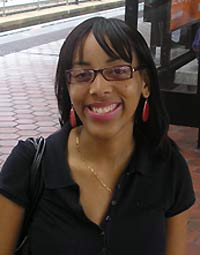 My name is Ashley, and this semester I have the privilege to work at the EPA Office of Children’s Health Protection and Environmental Education. I am so excited to spend the next couple of months writing blog entries in order to give middle and high school students a voice to express their own thoughts and feelings on issues like global climate change. Let me start off by mentioning a few things about myself.
My name is Ashley, and this semester I have the privilege to work at the EPA Office of Children’s Health Protection and Environmental Education. I am so excited to spend the next couple of months writing blog entries in order to give middle and high school students a voice to express their own thoughts and feelings on issues like global climate change. Let me start off by mentioning a few things about myself.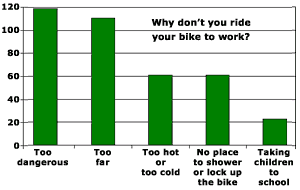 Of those who do bike to work, you do it to be green (saving carbon emissions not to mention $$ on gasoline and parking), or for the exercise, or for the pleasure it brings to be out in the air with critters and birds.
Of those who do bike to work, you do it to be green (saving carbon emissions not to mention $$ on gasoline and parking), or for the exercise, or for the pleasure it brings to be out in the air with critters and birds.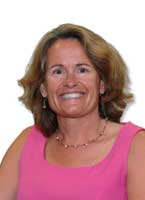 I repeat this, smiling and saying “nice job,” approximately 172 times that day. In the spirit of exercise and health, my favorite part is talking to the students about their sports. I especially enjoy when they play basketball or tennis, run track, or swim because those are sports that my kids do. I also love their “competitive” spirit in trying to outdo their classmates.
I repeat this, smiling and saying “nice job,” approximately 172 times that day. In the spirit of exercise and health, my favorite part is talking to the students about their sports. I especially enjoy when they play basketball or tennis, run track, or swim because those are sports that my kids do. I also love their “competitive” spirit in trying to outdo their classmates. I try to bring the energy-saving practices that I’ve learned at EPA into my own home as much as possible. We’ve changed all our bulbs to ENERGY STAR qualified
I try to bring the energy-saving practices that I’ve learned at EPA into my own home as much as possible. We’ve changed all our bulbs to ENERGY STAR qualified 
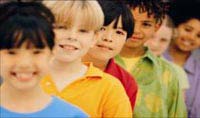 As I was thinking on Earth Day, I was thinking how these are the exact same lessons that we need for environmental protection. We can protect the earth if we just obey the basic rules we all learned when we were 3 years old. Here are the rules as I see them:
As I was thinking on Earth Day, I was thinking how these are the exact same lessons that we need for environmental protection. We can protect the earth if we just obey the basic rules we all learned when we were 3 years old. Here are the rules as I see them: